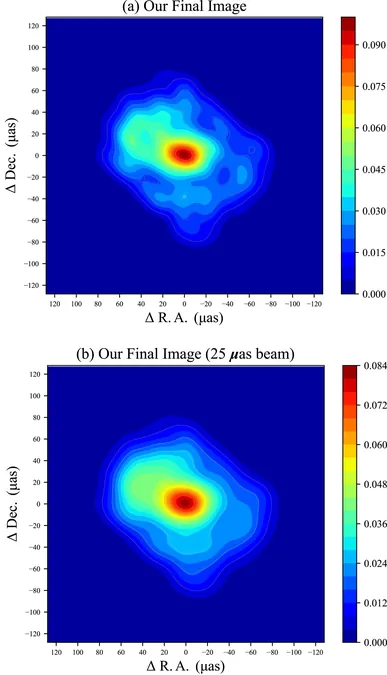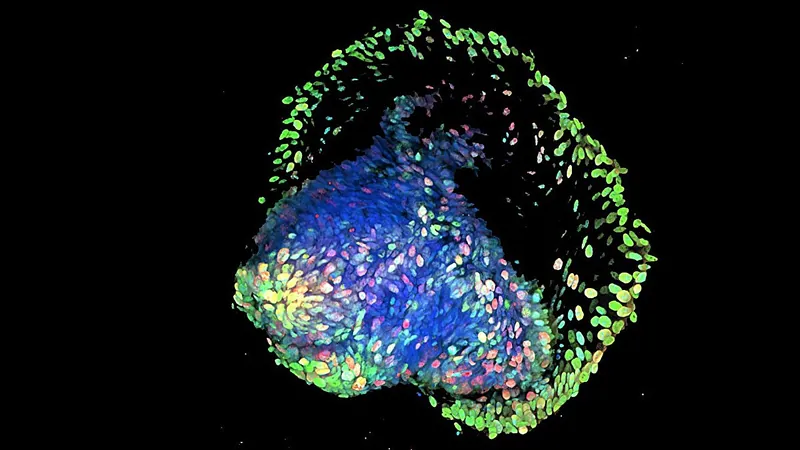
New Insights Unveil Elongated Structure of Milky Way's Central Black Hole!
2024-10-25
Author: Daniel
Groundbreaking Study on Sagittarius A*
A groundbreaking study led by Assistant Professor Makoto Miyoshi from the National Astronomical Observatory of Japan (NAOJ) has shed new light on the supermassive black hole at the heart of our galaxy, Sagittarius A*. The research team conducted an independent re-analysis of data collected by the renowned Event Horizon Telescope (EHT), revealing that the black hole exhibits a slightly elongated structure oriented in the east-west direction.
Published Research and Scientific Inquiry
Published in the esteemed Monthly Notices of the Royal Astronomical Society, this study exemplifies the iterative nature of scientific inquiry, highlighting how ongoing examination and discussion can refine our understanding of complex astronomical phenomena.
The Milky Way and Supermassive Black Holes
Our Milky Way galaxy is home to over 100 billion sun-like stars, and it’s believed that most large galaxies possess supermassive black holes at their centers, often weighing millions to billions of times more than our sun. Sagittarius A* is a prime example, consuming everything in its vicinity, including light, which renders it invisible. However, astronomers have inferred that this giant black hole has a mass approximately four million times that of the sun by observing the rapid orbits of nearby stars.
Event Horizon Telescope Observations
The Event Horizon Telescope, a global network of eight radio telescopes, captured data of Sagittarius A* in 2017 using an innovative technique called radio interferometry. This method allowed the synchronization of observations across vast distances, leading to the creation of the first-ever image of a black hole's shadow in 2022, characterized by a bright ring surrounding a dark center.
Recent Findings and Observations
In their recent findings, the research team employed traditional imaging techniques to analyze the publicly available EHT data, as opposed to the original analysis methods used by the EHT team. Their observations revealed that the eastern hemisphere of the black hole appeared brighter than the western, suggesting that the accretion disk—the ring of gas and dust spiraling into the black hole—may be in motion, with Miyoshi stating, "Our image is slightly elongated in the east-west direction, indicating the disk's rotation."
Importance of Transparency in Research
The EHT continues to be a vital source for black hole research, as it provides its observational data and analysis methodologies freely to the scientific community, encouraging independent verification. This commitment to transparency allows researchers like Miyoshi’s team to conduct regular validations of EHT results and fosters an environment of collaborative inquiry.
Future Perspectives on Black Hole Research
While there are differences between this study’s findings and those of the original EHT team, both interpretations are credible and stem from thorough analysis of the same data set. The evolving technology of radio interferometry, along with ongoing research in data analysis and image processing—enhanced by interdisciplinary insights—promises to deepen our understanding of these cosmic giants.
Conclusion and Anticipated Discoveries
As discussions and analyses continue to progress, the scientific community anticipates that even more reliable images and theories regarding Sagittarius A* and its enigmatic behavior will emerge, especially with follow-up observations that have been conducted since 2018. Stay tuned for the latest revelations about the depths of our galaxy!

 Brasil (PT)
Brasil (PT)
 Canada (EN)
Canada (EN)
 Chile (ES)
Chile (ES)
 España (ES)
España (ES)
 France (FR)
France (FR)
 Hong Kong (EN)
Hong Kong (EN)
 Italia (IT)
Italia (IT)
 日本 (JA)
日本 (JA)
 Magyarország (HU)
Magyarország (HU)
 Norge (NO)
Norge (NO)
 Polska (PL)
Polska (PL)
 Schweiz (DE)
Schweiz (DE)
 Singapore (EN)
Singapore (EN)
 Sverige (SV)
Sverige (SV)
 Suomi (FI)
Suomi (FI)
 Türkiye (TR)
Türkiye (TR)